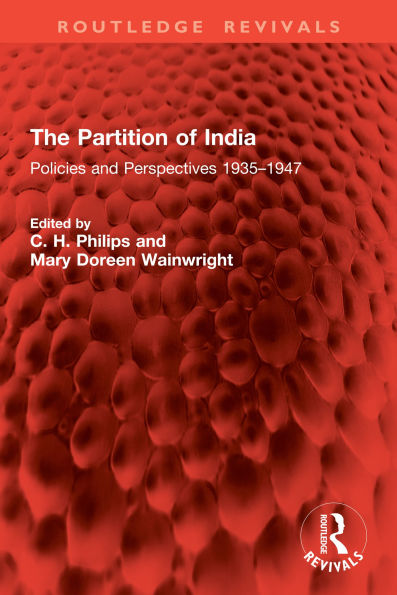The partition of India in 1947 was an outstanding event in world history. It formed a major turning point in the modern history of the sub-continent and of the Commonwealth. Originally published in 1970, after more than twenty years had passed, this title brought together the evidence and put into perspective the course of events which had led to the transfer of power in India from Britain to two successor states rather than to one.
In 1937 the Muslims in India were thought to be politically weak and disorganized, yet ten years later they were able to put forward a convincing claim for a separate state. How did this come about? The lack of any sense of urgency in making a constitutional settlement between the wars, Congress miscalculations during the war, and the political exploitation of Muslim nationalism all played a part, but the interpretation of the events leading to partition tends to vary with the preconceptions and outlook of the various contributors to the debate at the time.
The enquiry which led to this volume began as a simple attempt to collect evidence from those still alive. From this grew a regular series of meetings between ‘participants’ and historians of the three countries, culminating in a conference. The material presented here discusses the more important aspects of the partite from the different viewpoints. It is arranged in two sections: first-hand accounts by those who took part; and an analysis by leading specialists. In his Introduction Professor Philips points to the main historical problems which had emerged and suggests areas of study which would repay early investigation.
The time was not yet ripe for a wholly definitive account, but this book suggests a framework within which this could be done and brought together raw material for future historians before the generation of eye-witnesses passed away. The resources of the School of Oriental and African Studies enabled an enterprise to be mounted which would have been beyond the capacity of any one individual.
This book is a re-issue originally published in 1970. The language used and views portrayed are a reflection of its era and no offence is meant by the Publishers to any reader by this re-publication.
The partition of India in 1947 was an outstanding event in world history. It formed a major turning point in the modern history of the sub-continent and of the Commonwealth. Originally published in 1970, after more than twenty years had passed, this title brought together the evidence and put into perspective the course of events which had led to the transfer of power in India from Britain to two successor states rather than to one.
In 1937 the Muslims in India were thought to be politically weak and disorganized, yet ten years later they were able to put forward a convincing claim for a separate state. How did this come about? The lack of any sense of urgency in making a constitutional settlement between the wars, Congress miscalculations during the war, and the political exploitation of Muslim nationalism all played a part, but the interpretation of the events leading to partition tends to vary with the preconceptions and outlook of the various contributors to the debate at the time.
The enquiry which led to this volume began as a simple attempt to collect evidence from those still alive. From this grew a regular series of meetings between ‘participants’ and historians of the three countries, culminating in a conference. The material presented here discusses the more important aspects of the partite from the different viewpoints. It is arranged in two sections: first-hand accounts by those who took part; and an analysis by leading specialists. In his Introduction Professor Philips points to the main historical problems which had emerged and suggests areas of study which would repay early investigation.
The time was not yet ripe for a wholly definitive account, but this book suggests a framework within which this could be done and brought together raw material for future historians before the generation of eye-witnesses passed away. The resources of the School of Oriental and African Studies enabled an enterprise to be mounted which would have been beyond the capacity of any one individual.
This book is a re-issue originally published in 1970. The language used and views portrayed are a reflection of its era and no offence is meant by the Publishers to any reader by this re-publication.

The Partition of India: Policies and Perspectives 1935-1947
608
The Partition of India: Policies and Perspectives 1935-1947
608Related collections and offers

Product Details
| ISBN-13: | 9781040363003 |
|---|---|
| Publisher: | Taylor & Francis |
| Publication date: | 06/02/2025 |
| Series: | Routledge Revivals |
| Sold by: | Barnes & Noble |
| Format: | eBook |
| Pages: | 608 |
| File size: | 2 MB |
